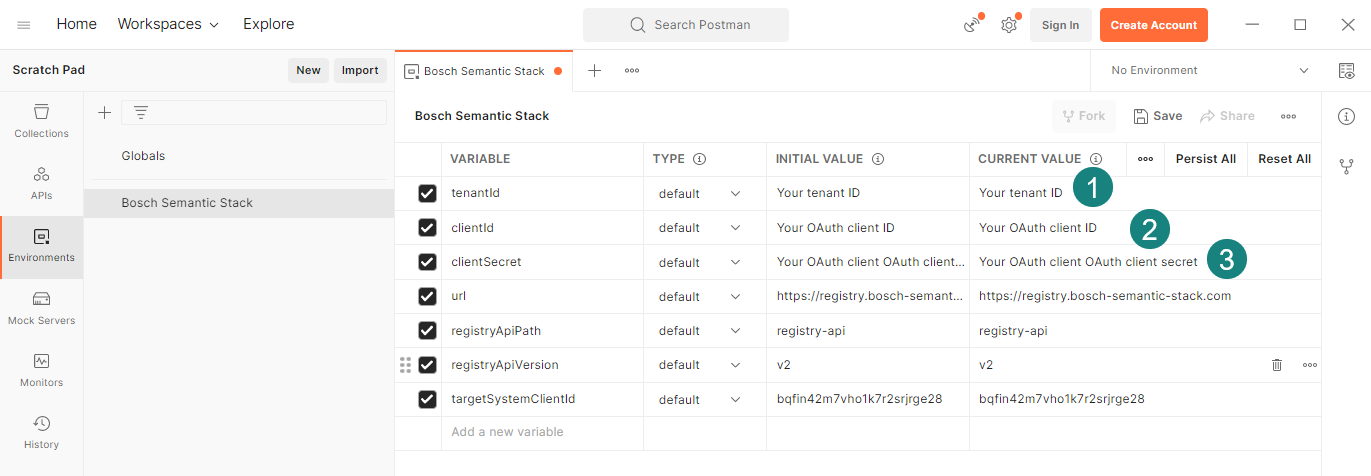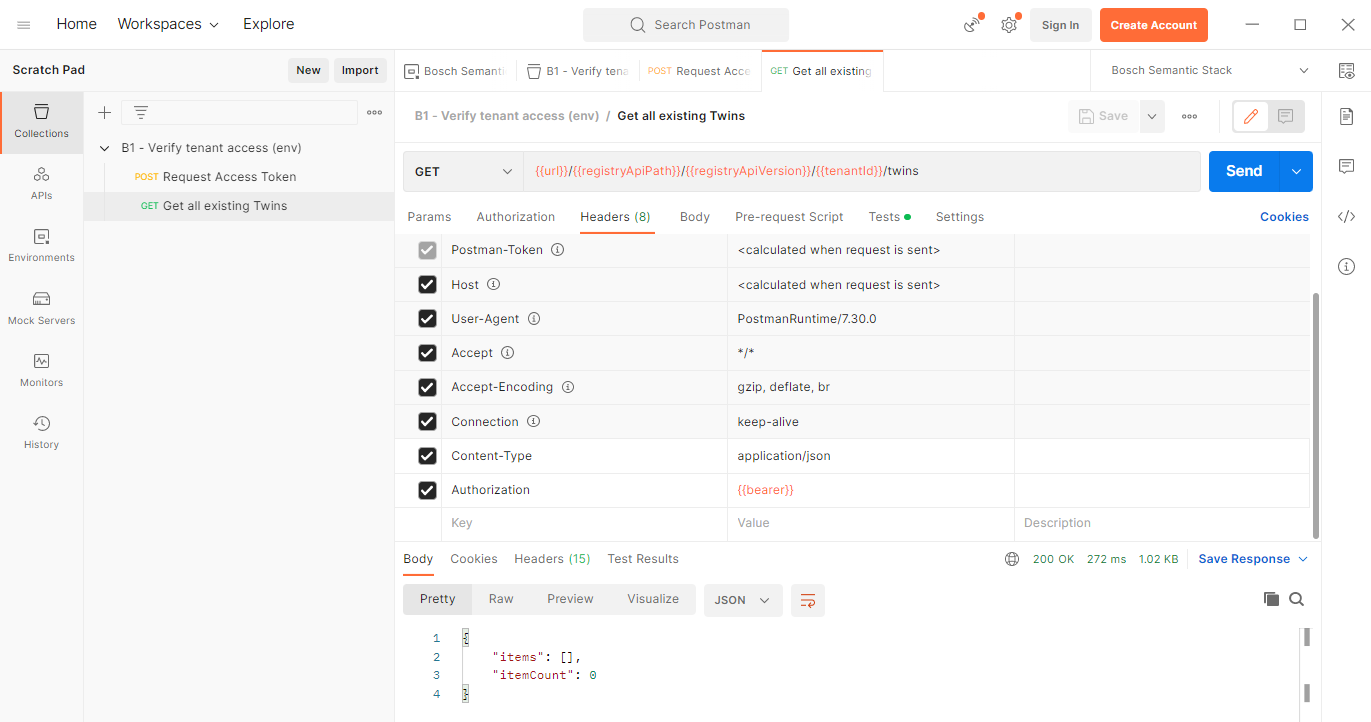Use Postman to verify your client has access
In the previous section you learned how to access to your Digital Twin Registry by logging in as user - see Request free access to an environment.
In this section we assume that your application which you want to build based on Bosch
Semantic Stack will need to access the Digital Twin Registry too.
We will use the Client Credentials Grant type flow in the further course of this guide.
Environment
Import the prepared environment file B0-ENV.json to Postman and create the default environment for the upcoming requests.
Add your values for the tenant ID (1), client ID (2) and client secret (3).
| This file holds the environment settings for all requests made throughout the getting started guide. Therefore, make sure your other collections will use the environment "Bosch Semantic Stack". |
Collection
Import the prepared collection
B1-verify-tenant-access.json to Postman and make sure your other collections will use the environment "Bosch Semantic Stack".
It holds 2 requests so far:
Request Access Token
This POST request will let our auth server check the validity of your credentials and will create a so called Bearer Token - which is used for the next requests.
The result will present the token and additional information about its validity time frame.
Get all existing twins
This GET request will list all twins in your tenant.
The result will vary of course - depending on how your Digital Twin Registry is populated.
In our example it shows 0 items. However, the important message here is in fact the response status 200 OK.
Congratulations,
your credentials seem to be valid, so feel free to continue with the next steps.


